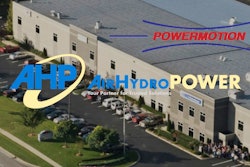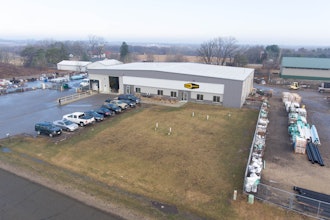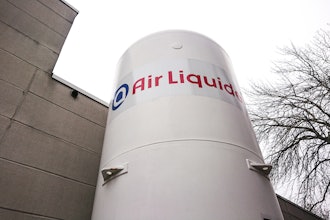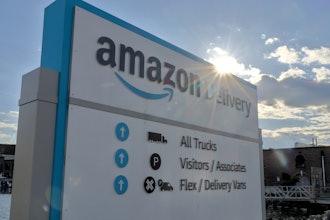Last year I wrote about three primary disruptors for industrial distributors in 2017. The customer experience, popup sites and mega marketplaces have all had tremendous impacts on e-commerce environments, from smaller specialty manufacturing distributors to B2B software solutions providers like the one I work for. As I’ve said before, we need to view these disruptors not as obstacles, but as evolving trends to incorporate into the overall commerce strategy. Changing our perception to one that embraces change and sees it as a competitive advantage is key to surviving in this industry.
After a tumultuous year (in just about every sense of the word) here we are looking at the next set of disruptors distributors will face in 2018. In the year to come we’ll see five major disruptors for distributors. Two, like the customer experience and mega marketplaces, have continued to evolve as technology, products and customer expectations have changed. New disruptors have emerged that also are serious ‘change makers’ for organizations, their people and the industry. It’s my opinion that every distributor needs to understand and incorporate each of these disruptors into their strategy for the coming year:
- A Hybrid Commerce Philosophy
- Growing Post-Purchase Expectations
- Robust Mobile Experiences
- Cloud-based Mega Distributors
- Pricing Transparency
Disruptor #1 – The Need for a Hybrid Model
Within the distributor’s commerce ecosystem, the different roles involved have many requirements. A researcher has very different needs from a procurement manager, for example, or service technician. Salespeople have a unique set of responsibilities as well and this may be where most of the disruption occurs.
The reality is that due in a big part to these multiple roles, we’re never going to be 100 percent self-serve within a B2B commerce environment. We have to start thinking in terms of a hybrid commerce model where salespeople will always be a critical part of the buying process. Most salespeople have become disconnected from the commerce experience. This is why so many companies are experiencing adoption rates lower than 5 percent for their new e-commerce solutions, as sales is simply not on board. Despite the investment of time and money, customers are simply not accepting the new system.
The goal of a superior B2B buying experience is to increase efficiencies and decrease the cost to serve existing customers, while increasing your share of wallet. A strong B2B sales process may start offline with a field or inside salesperson and then move to an online order. Or, it could start with a service technician who begins an order online, and then needs the direct help of a human CSR. It must interact with every role within the process. Don’t invest in the concept of self-serve; adopt a hybrid model that allows customers to cleanly and easily float between their digital and human interactions.
Disruptor #2 – Growing Post-Purchase Expectations
The ordering process is not the only aspect of a complex distribution commerce cycle that’s multi-touch. Post-purchase execution, whether they buy online or offline, is critical for customer satisfaction. A recent report from Pew Research revealed that more than 70 percent of customers stop doing business with a brand due to a poor support experience. I’ve seen circumstances where a new online ordering system has destroyed customer relationships that go back for decades. Expectations from B2C are actually driving up the expectations within the B2B cycle as well, making impacts from this disruptor even more serious. Keeping the entire commerce cycle connected, including all the roles within that cycle, is key to maintaining those relationships.
It’s not all just finding and fixing holes in the process either. Focusing on the post-purchase experience can reveal opportunities for enhancing revenue as well. That’s where promotions can provide more chances to upsell a customer, or where easier reorder processes and bring a greater share of wallet much sooner.
Disruptor #3 – Mobile
Part of the problem with the adoption of new e-commerce sites is that distributors view mobile as simply a responsive website. Although building a native mobile app with high functionality may have been an expensive project in the past, configurable, white label native apps are becoming a bigger part of the mix. With these “out of the box” solutions, native mobile apps are becoming a competitive edge, creating efficiencies for many distributors that never existed before. As I mentioned before, the top goal of B2B commerce is efficiency, and many distributors are leaving opportunity on the table by not considering how mobile can transform how people work in the field. User-specific rich product catalogs, specific pricing and product recommendations, and sophisticated order and re-order capabilities will soon become a requirement, not a “bell and whistle” feature for distributors. Those that are content with merely providing responsive site will likely start to lose customers unless they address the need for a mobile experience that provides nearly all the capabilities of the desktop one.
Disruptor #4 – Mega Distributors and the Cloud
I wrote about this as a major disruptor for 2017, but this trend continues to accelerate. Single sign-on mega-portals are becoming easier to build as cloud-based e-commerce solutions become more and more robust and less expensive. Plus, they offer provide the unique hybrid requirements of a B2B commerce environment whether it’s during the actual purchase, or post-purchase in terms of support and service. The sophisticated, B2C-like user experiences of these marketplaces are creating enormous competitive value for many distributors fighting the growing direct sales mindset of many manufacturers. Research backs that up: a 2017 UPS study focused on the industrial buying experience reported that the number of buyers who have purchased from an e-marketplace has more than tripled in the past four years, from 20 percent in 2013 to 75 percent in 2017.
Distributor marketplaces are providing more value to manufacturing clients through data as well. Good marketplaces provide not only a wide span of products, but more data to help accelerate the buying cycle both during an existing buying cycle through stronger personalization, as well more lead generation opportunities. Without providing increasingly more value, distributors will lose business to both direct sales for manufacturers, and to smarter distributors creating these enhanced mega marketplaces.
Disruptor #5 – Pricing Transparency
The demand for price transparency is perhaps the biggest disruptor we’ll see next year. B2C expectations are driving the need to expose pricing and that’s something that scares many distributors. After all, their business models have been based on complex, manual pricing processes for years.
But if pricing can be exposed even partially to the customer, distributors can offer easy buying experiences like guest checkout that be extremely advantageous. Allowing new customers to buy without the need to register creates an enormous opportunity for lead generation. Plus distributors don’t have the problem of protecting their “channel” so they can even expose the pricing and inventories of their most common products.
Gartner has predicted that almost 40 percent of B2B digital commerce sites will use price optimization algorithms and dynamic tools (as opposed to manual processes) to calculate product pricing in the next few years. Although the goal of B2B commerce is to increase efficiencies and lower the costs of sales, and removing outdated, complex pricing mechanisms certainly helps with that.
But this is actually one disruptor that can drive revenue in a major way. Bringing in opportunities and new customers creates a much warmer lead. Focusing on the post-purchase experience brings them into the fold with strong service and support that may include the value-add benefits of a cloud-based marketplace or robust mobile experience.
In the final analysis, “pretty” commerce sites don’t drive engagement. Making the customers’ lives easier and meeting growing expectations of an efficient, hybrid commerce model is what will deliver value as a distributor. Incorporating these disruptors into a 2018 business strategy can help businesses stay competitive in this constantly changing industry.
Karie Daudt is Vice President of Marketing & Customer Experience for Insite Software.






















